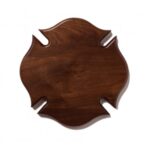I. Introduction to CNC Milled Speakers and the Importance of Upcycling Wood Scraps
II. The Benefits of Using Wood Scraps in Hi-Fi Audio Design
III. Step-by-Step Process of Creating CNC Milled Speakers from Wood Scraps
When it comes to audio equipment, many of us often think of sleek, shiny devices that boast the latest technology. But have you ever considered the beauty and sound quality that can stem from repurposing materials? Enter CNC milled speakers—a fantastic innovation in the world of sound that not only enhances your listening experience but also champions sustainability through upcycling wood scraps.
What are CNC Milled Speakers?
CNC, or Computer Numerical Control, milling is a precision machining process that allows for the intricate crafting of speaker components. This technique utilizes a computer program to control the movements of a cutting tool, creating beautiful and precise designs from various materials, particularly wood. The outcome? Well-crafted speakers that can deliver high-fidelity audio while looking stunning in your home.
The Importance of Upcycling Wood Scraps
Now, you might be wondering, why wood scraps? The truth is, wood scraps can often be seen as merely waste—leftover pieces from larger projects that might just end up in a landfill. However, these scraps hold untapped potential. By upcycling them into CNC milled speakers, we not only reduce waste but also give these materials a new lease on life. This practice not only promotes environmental consciousness but also encourages creativity in design. Imagine taking what was once considered trash and transforming it into a high-quality speaker that could be the centerpiece of your living room!
Benefits of Upcycling in Audio Design
Using wood scraps in the audio design process can offer numerous advantages:
- Sustainability: By upcycling, you contribute to reducing waste and conserving resources. It’s a small step that can have a significant impact on the environment.
- Unique Aesthetic: Each piece of wood has its own character and imperfections, resulting in speakers that not only sound great but also tell a story through their appearance.
- Cost-Effective: Sourcing wood scraps can be more budget-friendly compared to purchasing high-end materials. You can achieve excellent audio performance without breaking the bank.
- Sound Quality: Many high-quality woods, like walnut or oak, can enhance audio quality. Their natural properties can contribute to richer sound, making your listening experience even more enjoyable.
Your Invitation to Explore
As we dive deeper into the world of CNC milled speakers, let’s embrace this sustainable approach to audio design. Whether you are a seasoned audiophile or someone who simply enjoys good music, understanding how upcycled wood scraps can create stunning speakers is an exciting journey. Not only do you get to enjoy high-quality sound, but you also engage in a process that’s friendly to our planet. Get ready to explore the fascinating blend of technology, artistry, and sustainability that CNC milled speakers bring to the table!
The Benefits of Using Wood Scraps in Hi-Fi Audio Design
Hey there, fellow audio enthusiasts! Have you ever thought about the material your speakers are made from? While most people might just focus on the sound quality, the choice of material is crucial to producing that rich, immersive audio experience we all crave. Today, let’s dive into the fantastic benefits of using wood scraps in hi-fi audio design.
1. Sustainability Matters
In a world where sustainability is becoming increasingly important, using wood scraps is a fantastic way to promote eco-friendly practices. By upcycling these leftover pieces, you’re helping to reduce waste in landfills and giving new life to what would otherwise be discarded. It’s a win-win! You get beautiful, unique speakers, and Mother Earth gets a break.
2. Unique Aesthetic Appeal
One of the coolest things about using wood scraps is the character they bring to your speakers. Each piece of wood has its own story, grain patterns, and colors. This means that your speakers won’t just sound good; they’ll look stunning, too! You can create a one-of-a-kind conversation piece that reflects your personality and style.
3. Acoustic Properties
Wood is an amazing material for sound. Its natural properties help in creating a warm, rich tone that can elevate your listening experience. Here’s why:
- Vibration Damping: Wood effectively dampens vibrations, which means less distortion and clearer sound.
- Resonance Control: Different types of wood can influence the resonance of your speakers. Softer woods like pine might give a different sound profile compared to hardwoods like oak.
- Natural Sound Absorption: Wood has excellent sound-absorbing qualities, which can help in reducing unwanted echoes and improving overall audio clarity.
4. Cost-Effectiveness
Let’s be real; high-quality materials can often break the bank. By using wood scraps, you can significantly cut down on costs while still producing excellent speakers. It’s a budget-friendly solution that doesn’t compromise on quality. Plus, you can spend that extra cash on other upgrades!
5. Craftsmanship and Personalization
Using wood scraps allows you to get crafty! You have the freedom to design and build your own speakers, tailoring them to your specific taste and audio preferences. This DIY approach can be incredibly rewarding and makes listening to music feel even more special because you had a hand in creating it.
6. Supporting Local Artisans
By sourcing wood scraps from local woodworkers or sawmills, you’re supporting your community. This not only fosters local economies but also encourages a culture of craftsmanship, where artisans can thrive and share their talents. So, when you make those speakers, you’re not just making music; you’re building connections.
In conclusion, using wood scraps in hi-fi audio design opens up a world of possibilities. From sustainability and unique aesthetics to acoustic benefits and cost-effectiveness, upcycling wood scraps is an incredible choice for anyone looking to create beautiful, high-quality sound systems. So, why not give it a whirl? Your ears (and the planet) will thank you!
Step-by-Step Process of Creating CNC Milled Speakers from Wood Scraps
So, you’ve decided to take the plunge into the fascinating world of CNC milled speakers! Not only are you tapping into your creative side, but you’re also helping the environment by upcycling wood scraps. Let’s walk through the process together, step by step, ensuring you have all the tips and tricks to make your project a success!
1. Gather Your Materials
First things first, you need to collect some wood scraps. Here’s what you’ll want to look for:
- Quality wood: Aim for hardwoods like oak, maple, or walnut for their acoustical properties.
- Clean scraps: Ensure the pieces are free from nails, screws, or any other contaminants.
- Wood glue: You might need this for assembling pieces together.
2. Design Your Speaker
Next up, it’s time to get creative! Using design software such as AutoCAD or Fusion 360, you can sketch out your speaker. Consider the following:
- Dimensions: Think about how big or small you want your speakers to be.
- Speaker configuration: Choose a design that suits your audio needs, whether it’s full-range or multi-way.
- Ventilation: Don’t forget to add ports or vents for better acoustics!
3. Prepare for CNC Milling
With your design set, it’s time to prepare the wood. Here’s how to do it:
- Get your CNC machine ready: Ensure it’s clean and calibrated for precise cuts.
- Transfer your design: Upload your design file to the CNC milling software.
- Secure the wood: Place your wood scrap onto the CNC bed and use clamps to hold it in position.
4. CNC Milling Process
Now comes the exciting part! Watch as your CNC machine brings your design to life:
- Start the milling process: Monitor the CNC machine closely to ensure everything is running smoothly.
- Check for any issues: If you hear any unusual sounds or see any issues, stop the process immediately!
5. Assembly
Once the milling is complete, it’s time to assemble your speakers:
- Remove excess material: Sand down any rough edges for a smooth finish.
- Glue and clamp: Join the parts together using wood glue and clamps, ensuring everything is aligned properly.
- Install speakers: Fit your driver units into the enclosures you’ve just created.
6. Finishing Touches
To really make your speakers shine, consider these finishing touches:
- Stain or paint: Choose a finish that highlights the natural beauty of the wood.
- Polish: Use a wood polish to give your speakers an attractive shine.
- Sound testing: Once everything is assembled, test them out! Adjust if necessary.
There you have it! You’ve just turned wood scraps into beautiful, functional CNC milled speakers. Not only have you created something unique, but you’ve also given new life to materials that might have otherwise gone to waste. Enjoy your new audio project!










Comments